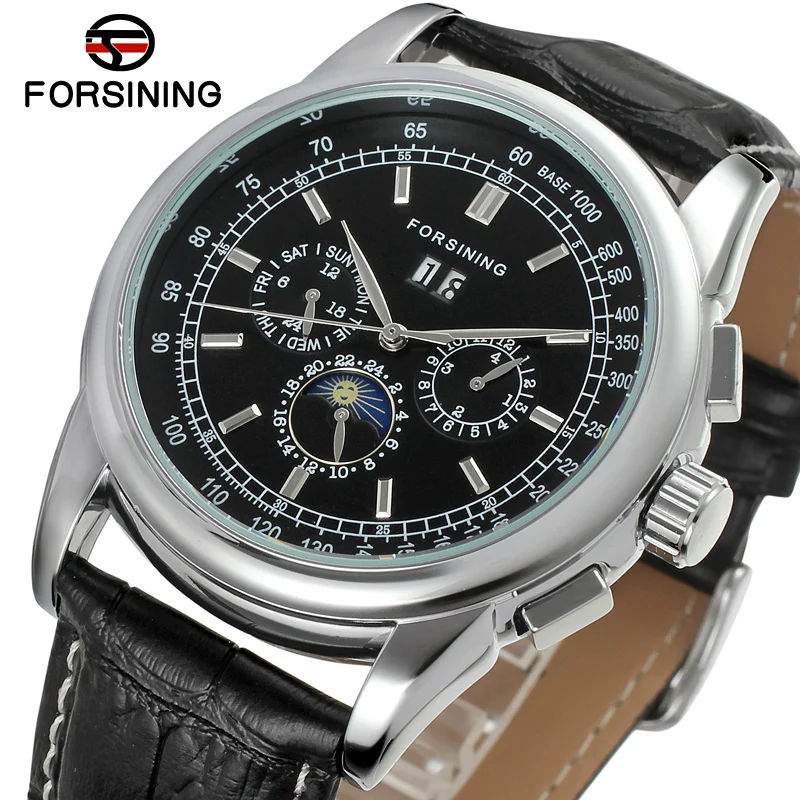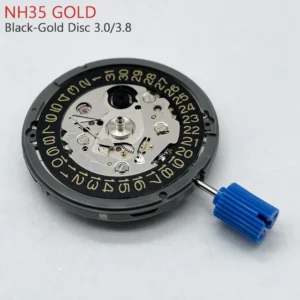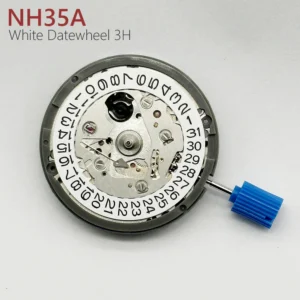Introduction: The Moon on Your Wrist – The Fascination of Moonphase Complications
The moon has captivated humanity since the dawn of civilization, its rhythmic journey across the night sky marking the passage of time long before mechanical timepieces existed. In the world of horology, this ancient relationship is honored through moonphase complications – specialized watch mechanisms that track and display the current phase of the lunar cycle on your wrist.
What is a complication? In watchmaking, a “complication” is any feature beyond simple time-telling (hours, minutes, seconds). Complications add functionality and technical sophistication to a timepiece, showcasing the watchmaker’s skill and ingenuity.
The lunar cycle spans approximately 29.5 days from one new moon to the next – a period watchmakers must translate into mechanical movement. Beyond their practical function, moonphase displays embody the poetry of watchmaking, connecting wearers to celestial rhythms in an increasingly digital world. They represent horology’s unique blend of science, craftsmanship, and artistic expression.
In this guide, we’ll explore the rich variety of moonphase displays, from their historical origins to the mechanical principles that power them, examining both their technical intricacies and aesthetic beauty.
Through the Ages: The Historical Evolution of Moonphase Displays
The story of tracking lunar cycles through mechanical means begins not with watches but with ancient astronomical instruments. The Antikythera mechanism, dating back to approximately 100 BCE, included indications for lunar phases, demonstrating humanity’s early ingenuity in mechanically tracking celestial movements.
By the 14th century, astronomical clocks in European town squares and cathedrals prominently featured moonphase displays. The famous Prague Astronomical Clock (Orloj), installed in 1410, showcases this tradition with its ornate moon indicator that has tracked lunar phases for over six centuries.
The miniaturization of these mechanisms into portable form came with pocket watches during the 17th-19th centuries, when wealthy patrons commissioned elaborate timepieces displaying astronomical functions including moon phases. These were not merely practical tools but statements of scientific understanding and artistic craftsmanship.
The transition to wristwatches in the early 20th century initially left little room for such complex mechanisms. However, by mid-century, manufacturers had overcome the engineering challenges of fitting moonphase complications into smaller cases. The subsequent quartz crisis temporarily diminished interest in mechanical complications, but the 1980s-90s saw a remarkable renaissance of traditional watchmaking, with moonphase displays returning as symbols of horological heritage.
Today’s moonphase watches benefit from modern manufacturing techniques while honoring centuries of historical horological developments, creating timepieces that connect wearers to both technological innovation and timekeeping tradition.
The Mechanics Behind the Magic: How Moonphase Displays Work
At the heart of every moonphase complication lies an elegant mechanical solution to representing the moon’s 29.53-day synodic cycle. The standard approach utilizes a 59-tooth wheel that completes one full rotation every 59 days, with each tooth representing half a day in the moon’s cycle.
This wheel carries a disc depicting two identical moon images, which rotate beneath an aperture in the watch dial. As the wheel advances one tooth each day, the visible portion of the moon image changes to match the current lunar phase. This system creates an approximation of 29.5 days per lunar month, remarkably close to the actual 29.53-day cycle.
However, this small discrepancy means standard moonphase displays accumulate an error of one day approximately every 2.5 years, requiring occasional adjustment. More sophisticated mechanisms employ additional gearing to achieve greater precision. The advanced 135-tooth system, for instance, reduces error to just one day every 122 years.
The visual effect is created through several components working in harmony:
– A moon disc featuring one or two moon images
– A driving wheel with precisely calculated teeth
– A program wheel connecting to the watch’s timekeeping gear train
– An aperture or indicator on the dial showing the current phase
The integration of this system with the watch’s main movement requires careful calculation of gear ratios to ensure the moon disc rotates at exactly the right speed. In more complex calendar watches, the moonphase mechanism must also coordinate with date, day, and month displays.
For those interested in diving deeper into the mechanical intricacies, comprehensive explanations of moonphase complications reveal how these mechanisms elegantly translate celestial movements into the miniature universe of a wristwatch.
A Gallery of Designs: Major Types of Moonphase Displays
Moonphase displays come in remarkable variety, each design approach offering different aesthetic qualities and methods of representing lunar cycles. Let’s explore the major categories:
Classic Aperture Displays
The most traditional format features a crescent-shaped window (often called a “bosom” or “arch” display) through which a rotating disc showing the moon appears. As the disc rotates, different portions of the moon become visible, mimicking waxing and waning phases. This design dates back to early pocket watches and remains popular for its elegant simplicity.
A variation on this theme is the double aperture system, where separate windows show both the waxing and waning portions of the cycle simultaneously. This provides a more complete view of the lunar progression but requires more dial space.
Hand-Based Displays
Rather than using a rotating disc, some watches employ a hand indicator that points to the current moon phase on a subdial. These radial displays often mark the moon’s age numerically (1-29) around a semicircular scale, with symbols indicating key phases. This approach offers precision readability but sacrifices the visual representation of the actual moon.
Age-of-moon numeric displays take this further by focusing primarily on the numerical day within the lunar cycle, prioritizing technical data over visual imagery.
Astronomical Moonphases
For the ultimate in realistic lunar tracking, astronomical moonphase displays employ sophisticated mechanisms to show the moon’s appearance with greater accuracy. These may include:
– Three-dimensional spherical moon representations that physically rotate
– Photorealistic moon discs that capture the actual appearance of the lunar surface
– Displays showing not just phases but the moon’s position in its orbital path
These designs often form part of larger astronomical complications and represent the height of horological complexity.
Artistic Interpretations
Watchmakers frequently use moonphase displays as opportunities for artistic expression. Common artistic approaches include:
– Anthropomorphic moon faces with human-like expressions (smiling or sleeping)
– Special materials like meteorite or aventurine creating celestial effects
– Integration with day/night indicators using color gradients or rotating scenery
– Unconventional placements or formats that reimagine the traditional display
Many prestigious manufactures offer moonphase automatic watches with their own signature aesthetic approaches, making these displays not just technical features but defining elements of their design language.
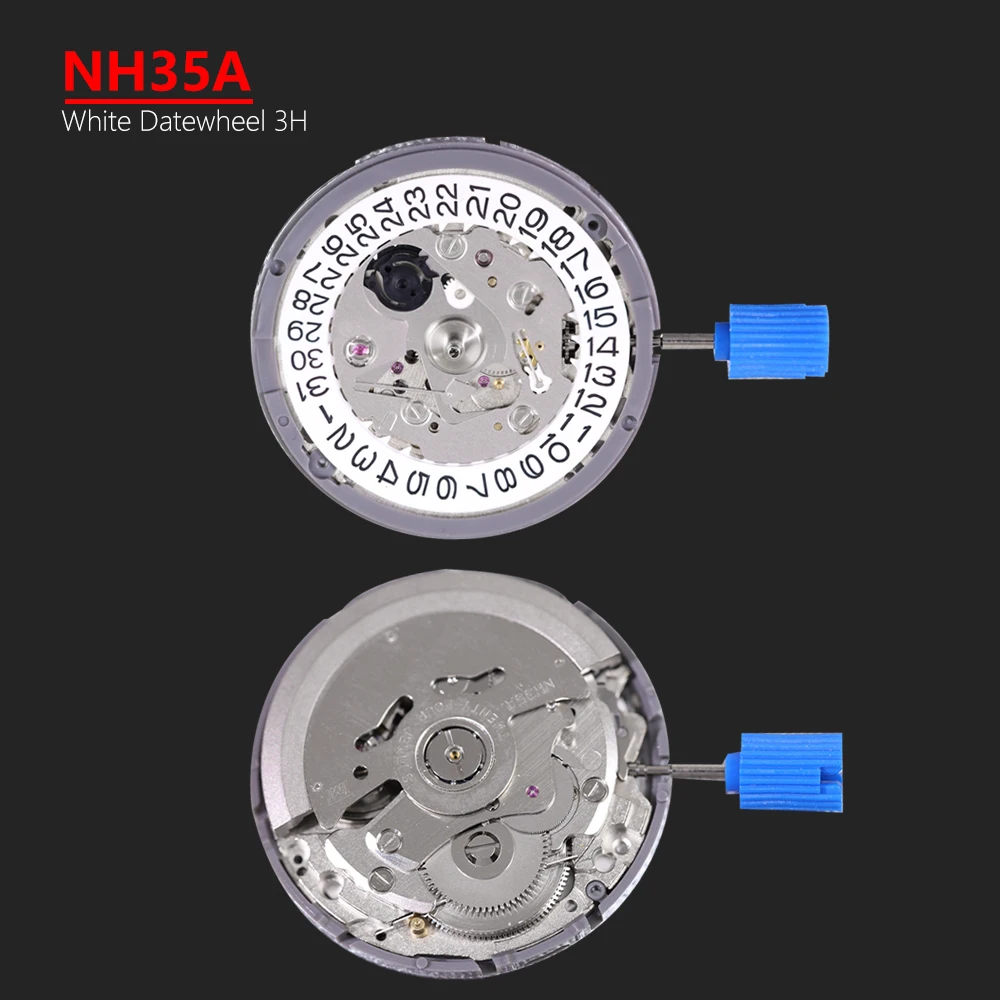
In Pursuit of Precision: Accuracy in Moonphase Complications
The accuracy of a moonphase display represents one of horology’s most intriguing technical challenges. The exact synodic month (29.53059 days) cannot be perfectly represented through simple gear ratios, forcing watchmakers to create increasingly sophisticated approximations.
The standard 59-tooth system creates a lunar month of exactly 29.5 days, resulting in an error of 0.03059 days per month. This seemingly small discrepancy accumulates to approximately one day’s error every 2.5 years, requiring occasional adjustment by the wearer.
More sophisticated mechanisms achieve remarkable precision:
| Mechanism | Accuracy | Error Accumulation |
|---|---|---|
| Standard 59-tooth | 29.5 days | 1 day every ~2.5 years |
| 135-tooth system | 29.53 days | 1 day every ~122 years |
| Advanced astronomical | 29.530588 days | 1 day every 1,000+ years |
The 135-tooth system represents a significant engineering achievement, creating a moonphase that, once set correctly, will remain accurate beyond a typical human lifetime. Ultra-precise astronomical moonphases employ even more complex gear trains with multiple wheels working together to achieve accuracies measured in millennia.
However, these precision improvements come with trade-offs in manufacturing complexity, maintenance requirements, and cost. For most wearers, the difference between a standard and high-precision moonphase may be philosophical rather than practical.
The accuracy discussion continues in detailed comparisons of mechanical versus astronomical moonphase accuracy, where the technical differences are explored in greater depth.
Design and Aesthetics: The Artistic Side of Moonphase Displays
Beyond their mechanical ingenuity, moonphase complications serve as perfect canvases for artistic expression. The moon disc itself receives particular attention, with watchmakers employing various materials and finishing techniques to create distinctive visual effects.
Traditional designs often feature gold or silver moons against blue backgrounds representing the night sky. The moon may be represented through polished applied elements, engraved patterns, or painted illustrations. More contemporary interpretations might employ:
- Aventurine glass creating a sparkling star-filled effect
- Meteorite dials offering material actually from space
- Hand-painted miniature moon scenes with remarkable detail
- Lapis lazuli or mother-of-pearl backgrounds for rich color and texture
The placement and proportion of the moonphase display significantly impact the overall aesthetic. Some designs make the moonphase the central focus of the dial, while others integrate it subtly within subdials or at unusual positions like 6 o’clock or along the periphery.
Different brands have developed signature moonphase styles recognizable at a glance. Some favor realistic astronomical representations, while others embrace whimsical interpretations featuring anthropomorphic moon faces with expressions ranging from serene to playful.
Watchmakers often pair moonphase displays with complementary complications like perpetual calendar automatic watches, where the astronomical theme extends to tracking days, months, and leap years in harmonious design.
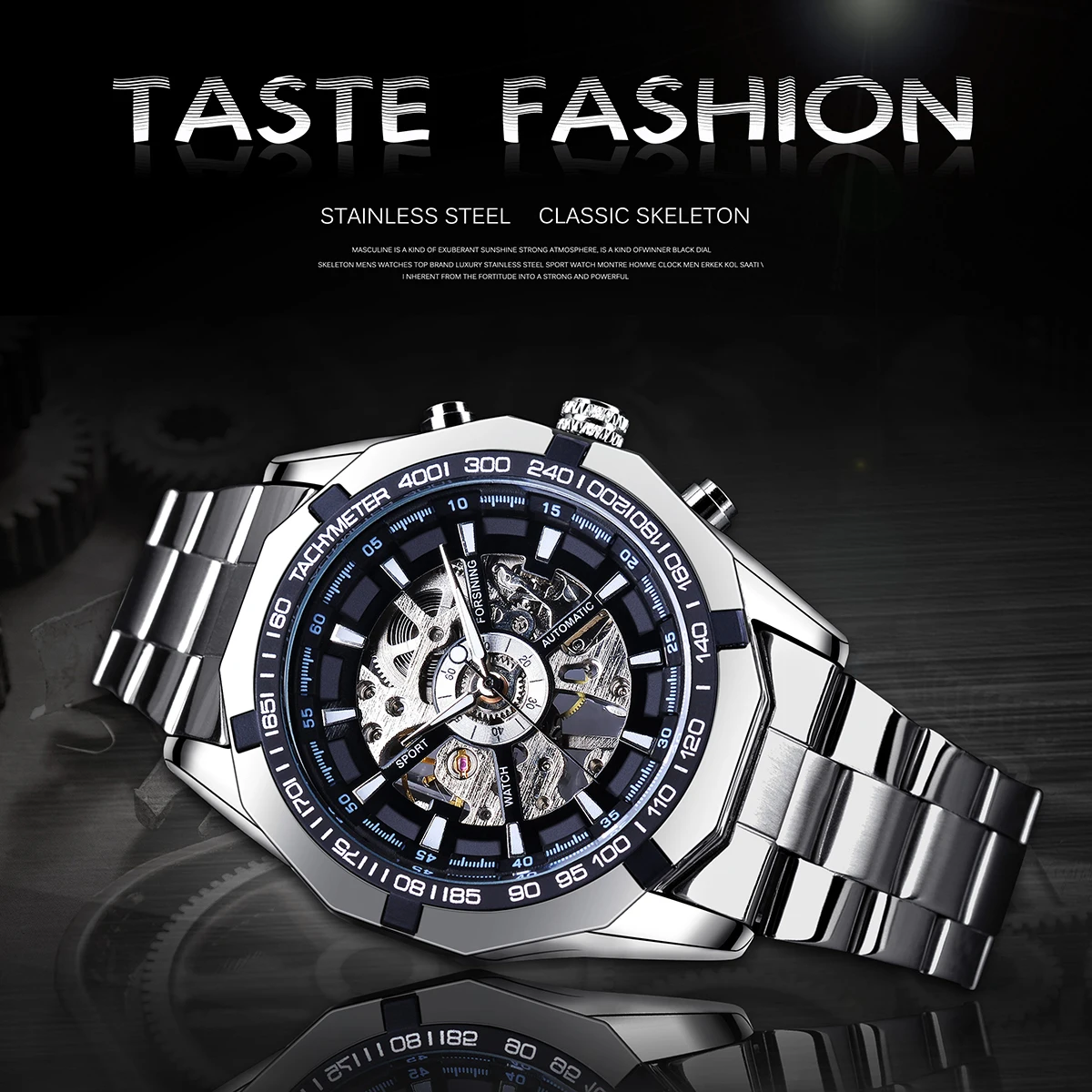
Living with the Moon: Setting and Maintaining Your Moonphase Watch
Owning a moonphase watch creates a special relationship with both your timepiece and the night sky. Proper setting and maintenance ensure your mechanical moon stays synchronized with its celestial counterpart.
Most moonphase watches are adjusted using either:
1. The crown, typically in a specific position or setting mode
2. Recessed pushers that require a small tool to press
3. Side-mounted correctors designed for occasional adjustment
To set your moonphase correctly:
- First determine the current moon phase using an almanac, astronomical website, or smartphone app
- Identify the last full moon date as your reference point
- Count days elapsed since the full moon
- Use the watch’s adjustment mechanism to advance the moonphase to match the current phase
- Finish by setting the correct time and date
Take care when adjusting calendar functions, as many moonphase watches have “danger zones” (typically between 9 PM and 3 AM) when manual adjustment could damage the mechanism. During these hours, the calendar gears are engaged for the automatic date change, and manual intervention risks misaligning or breaking delicate components.
The maintenance requirements for your moonphase watch depend on its accuracy level. Standard 59-tooth systems need adjustment approximately every 2-3 years, while high-precision versions may remain accurate for decades. Regular servicing by a qualified watchmaker will ensure all functions continue to operate correctly.
For detailed step-by-step instructions on proper moonphase display synchronization, consult resources specific to your watch model, as adjustment procedures vary between manufacturers.
Classic Automatic Dress Watches, Day Date Automatic Watches, Perpetual Calendar Automatic Watches
Price range: $540.60 through $574.60 Select options This product has multiple variants. The options may be chosen on the product pageAutomatic Skeleton Watches, Open Heart Automatic Watches
$98.36 Select options This product has multiple variants. The options may be chosen on the product pageDay Date Automatic Watches, Gold Tone Automatic Watches
$138.24 Select options This product has multiple variants. The options may be chosen on the product page- $480.96 Select options This product has multiple variants. The options may be chosen on the product page
Day Date Automatic Watches, Professional Spec Dive Watches
Price range: $751.60 through $790.26 Select options This product has multiple variants. The options may be chosen on the product page
Icons of Lunar Timekeeping: Notable Moonphase Watches
Throughout horological history, certain moonphase watches have achieved iconic status through their technical innovation, design excellence, or historical significance. These timepieces represent benchmarks against which other lunar complications are measured.
Early pocket watch moonphases from the 18th century established the traditional aesthetic with their hand-painted moon faces and ornate dials. These historical pieces laid the foundation for the complication’s artistic possibilities.
In the realm of technical innovation, several manufacturers have pushed the boundaries of lunar precision. Watches featuring the 135-tooth system marked a significant advancement in accuracy, while more recent astronomical moonphases achieve astonishing precision measured in thousands of years.
The artistic interpretation of moonphases has produced some truly remarkable designs, from photorealistic lunar surfaces to stylized representations using precious materials. Some watches feature moon discs crafted from actual meteorite, creating a poetic connection between the timepiece and the celestial body it tracks.
Accessibility has increased in recent decades, with moonphase complications appearing across diverse price points. While traditionally associated with high-end watchmaking, many manufacturers now offer more affordable options without sacrificing the complication’s essential character and appeal.
For those interested in complications beyond moonphases, many open heart automatic watches combine lunar displays with exposed movement sections, creating fascinating juxtapositions of mechanical and astronomical elements.
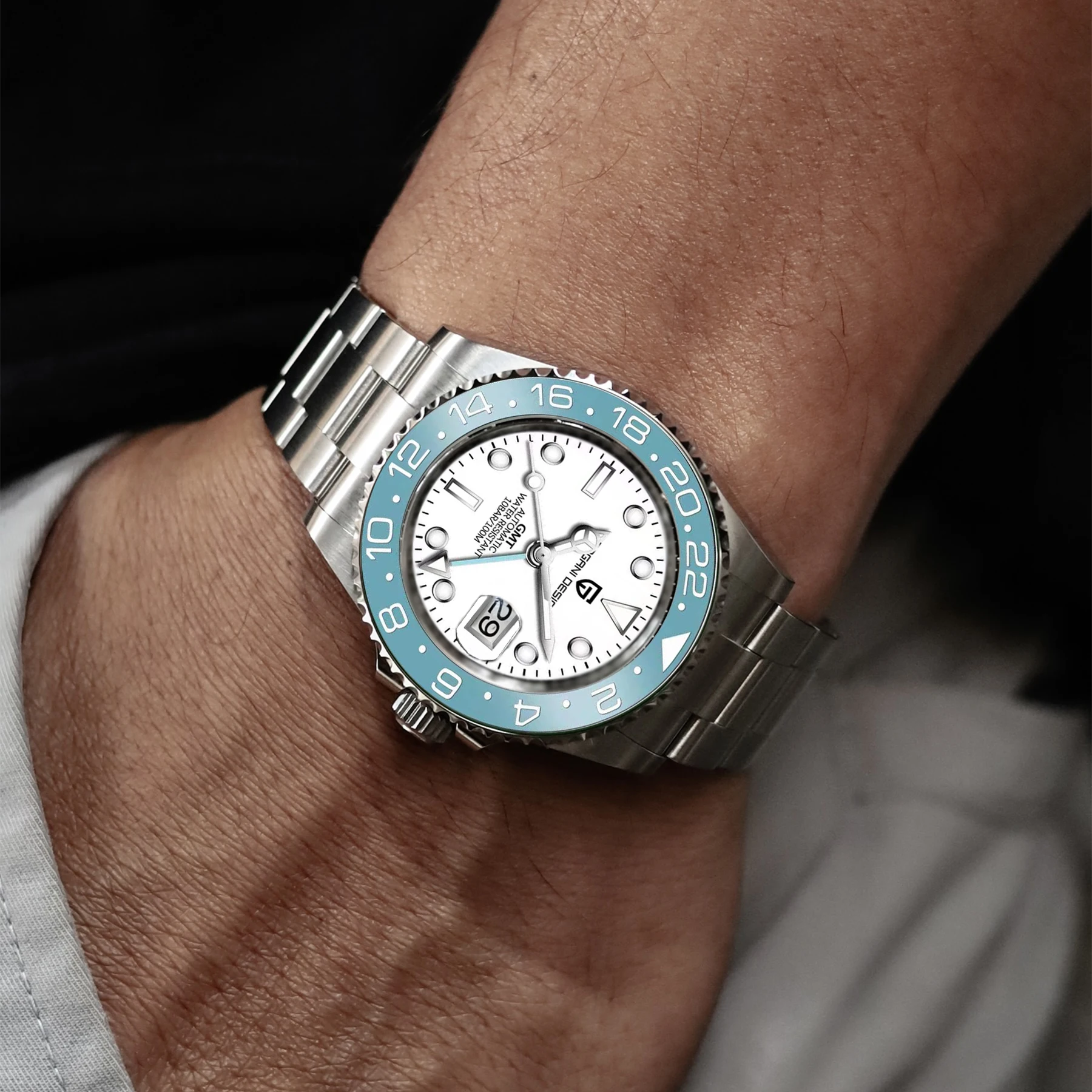
The Language of Lunar Horology: Essential Terminology
Understanding moonphase complications requires familiarity with specialized horological terminology:
Synodic month/Lunation: The 29.53-day cycle from one new moon to the next; the period tracked by moonphase complications.
Waxing moon: The phase when the visible portion of the moon is increasing (after new moon).
Waning moon: The phase when the visible portion of the moon is decreasing (after full moon).
New moon: When the moon is positioned between Earth and sun, appearing invisible.
Full moon: When Earth is between the sun and moon, making the entire lunar face visible.
Quarter moons: First quarter (half-visible, waxing) and last quarter (half-visible, waning).
Aperture/Window: The opening in the watch dial through which the moon disc is visible.
Bosom/Arch display: The traditional crescent-shaped window used for moonphase displays.
Age of the moon: The number of days elapsed since the last new moon (1-29).
Astronomical moonphase: High-precision mechanisms that track the lunar cycle with exceptional accuracy.
Many watch enthusiasts begin their collection of complicated timepieces with day-date automatic watches before advancing to moonphases, as calendar functions provide a practical foundation for understanding astronomical complications.
Choosing Your Celestial Companion: Buying Considerations
Selecting the perfect moonphase watch involves balancing several factors beyond mere aesthetics. Here are key considerations to guide your decision:
Accuracy level: Determine whether standard precision (requiring adjustment every few years) meets your needs, or if you prefer a high-precision mechanism that will remain accurate for decades or longer. Remember that higher accuracy typically commands higher prices.
Display style: Consider which moonphase presentation resonates with you personally – traditional aperture designs offer classic elegance, while astronomical displays provide greater realism. Your choice should reflect both your aesthetic preferences and how you intend to use the watch.
Legibility and functionality: Some artistic moonphase displays prioritize beauty over easy readability. Decide whether you want a watch that allows quick, precise determination of the lunar phase or one that offers a more poetic interpretation.
Integration with other complications: Moonphases often appear alongside other functions like calendar displays or chronographs. Consider whether these additional features enhance or complicate your enjoyment of the watch.
Maintenance requirements: More complex moonphase mechanisms may require specialized service, potentially increasing long-term ownership costs. Factor in the availability of qualified watchmakers in your area.
Size and wearability: Complicated watches tend to be larger to accommodate additional mechanisms. Ensure the dimensions suit your wrist and wearing preferences.
For a deeper exploration of these considerations, consult our ultimate guide to moonphase watches, which provides comprehensive advice for enthusiasts at all levels.
Beyond Timekeeping: Why Moonphases Endure in Modern Horology
In an age where digital devices can track celestial bodies with perfect accuracy, the continued popularity of mechanical moonphase displays might seem puzzling. Yet their enduring appeal speaks to something deeper than mere functionality.
Moonphase complications represent a perfect marriage of technical ingenuity and artistic expression. They transform watches from simple time-telling tools into miniature mechanical poems celebrating our connection to the cosmos. The slowly rotating moon disc mirrors the actual lunar journey visible through our windows, creating a tangible link between personal timekeeping and universal rhythms.
For many enthusiasts, the slight imprecision of standard moonphase mechanisms adds to their charm – a reminder that human creations, even at their most brilliant, remain humble approximations of natural phenomena. The occasional need to reset the display becomes a moment of reconnection with both the watch and the night sky.
As watchmaking continues to evolve, moonphase complications maintain their special place as expressions of horological art. They remind us that the finest timepieces do more than measure passing seconds – they celebrate our enduring fascination with measuring, understanding, and appreciating the movements that govern our universe. This timeless connection between watchmaking and astronomy continues to inspire both creators and collectors, ensuring the enduring allure of moonphase complications for generations to come.

